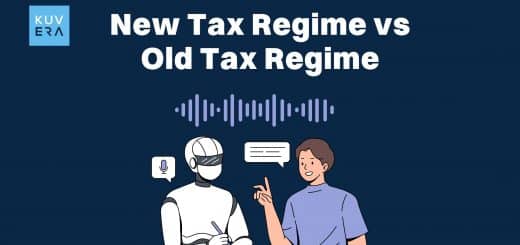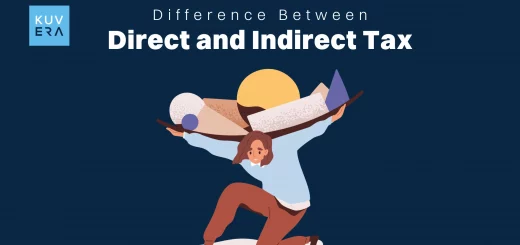One of the most awaited declarations in the budget are on taxes. Direct taxes, in particular, impact our daily lives as it is associated with our income or earnings. One of the direct tax norms introduced over the recent few budgets was related to the new tax regime.
Here are the nitty grits associated with Union Budget 2024 old tax regime vs new tax regime updates:
Changes in New Tax Regime in Budget 2024
Budget 2024 came up with a lot of changes with the main focus on making the new tax regime more attractive. The motive behind these changes was to encourage more and more taxpayers to adopt the new tax regime.
The new tax regime was introduced in the 2020 budget, featuring concessional tax rates. However, taxpayers who chose this regime were unable to claim significant deductions such as HRA, LTA and those under Section 80C, resulting in a lower uptake among taxpayers. To enhance the attractiveness of the new tax regime in subsequent budgets, several key changes were implemented by Finance Minister Nirmala Sitharaman:
1. Increased Tax Slabs
| Tax Slab for FY 2023-24 (Pre-budget changes) | Tax Rate | Tax Slab for FY 2024-25 (Post-budget changes) | Tax Rate |
|---|---|---|---|
| Upto ₹ 3 lakh | Nil | Upto ₹ 3 lakh | Nil |
| ₹ 3 lakh - ₹ 6 lakh | 5% | ₹ 3 lakh - ₹ 7 lakh | 5% |
| ₹ 6 lakh - ₹ 9 lakh | 10% | ₹ 7 lakh - ₹ 10 lakh | 10% |
| ₹ 9 lakh - ₹ 12 lakh | 15% | ₹ 10 lakh - ₹ 12 lakh | 15% |
| ₹ 12 lakh - ₹ 15 lakh | 20% | ₹ 12 lakh - ₹ 15 lakh | 20% |
| More than 15 lakhs | 30% | More than 15 lakhs | 30% |
2. Standard deduction for salaried employees is proposed to be increased from ₹50,000 to ₹75,000.
3. Deduction on family pension for pensioners is proposed to be enhanced from ₹15,000 to ₹25,000
4. As a result of this, a salaried employee in the new tax regime stands to save up to ₹17,500 in income tax.
Comparison of Old Tax Regime and New Tax Regime
The major difference is in between the income slabs of both the regimes:
1. Tax Rates for Different Income Slabs under Old Tax Regime
| Income Slabs | Tax Rate |
|---|---|
| Upto ₹ 3 lakh | Nil |
| ₹ 3 lakh - ₹ 7 lakh | 5% |
| ₹ 7 lakh - ₹ 10 lakh | 10% |
| ₹ 10 lakh - ₹ 12 lakh | 15% |
| ₹ 12 lakh - ₹ 15 lakh | 20% |
| More than 15 lakhs | 30% |
2. Tax Rates for Different Income Slabs under New Tax Regime
| Income Slabs | Age < 60 years & NRIs | Age 60 to 80 years | Age > 80 Years |
|---|---|---|---|
| Up to ₹ 2.5 lakh | NIL | NIL | NIL |
| ₹ 2.5 lakh - ₹ 3 lakh | 5% | NIL | NIL |
| ₹ 3 lakh - ₹ 5 lakh | 5% | 5% | NIL |
| ₹ 5 lakh - ₹ 10 lakh | 20% | 5% | 20% |
| More than 10 lakh | 30% | 20% | 30% |
3. Other differences between Old and New Tax Regimes
| Particulars | Old Tax Regime | New Tax Regime |
|---|---|---|
| Deductions and Exemptions | Taxpayers can claim various deductions under sections like 80C (investments in PPF, ELSS, etc.), 80D (health insurance and others as well as exemptions like House Rent Allowance (HRA) and Leave Travel Allowance (LTA). Approximately 70 exclusions and deductions are available under this system that can reduce taxable income and minimise tax payments. | Only a few specified deductions which are available in the old regime are permitted in the new regime. |
| Complexity | More complex due to multiple deductions and exemptions, requiring careful calculation to optimize tax liability. Taxpayers need to keep track of eligible deductions which can be cumbersome. | Simpler and straightforward as it eliminates most deductions and exemptions, making it easier for taxpayers to calculate their tax. |
| Impact on Different Taxpayers | More beneficial for taxpayers with significant deductions (like home loan interest, insurance premiums and long-term investments). Allows high-income individuals to reduce their taxable income significantly through various exemptions. | Generally, more advantageous for those with fewer deductions or individuals preferring a simplified tax process. Lower tax rates can lead to a lower overall tax liability for individuals with a simpler financial profile. |
| Income Level for Rebate Eligibility | ₹ 5 lakhs | ₹ 7 lakhs |
| Standard Deduction | ₹ 50,000 | ₹ 75,000 |
| Effective Tax-Free Salary Income | ₹ 5.5 lakhs | ₹ 7.75 lakhs |
| Rebate u/s 87A | ₹ 12,500 | ₹ 25,000 |
The old and new tax regimes in India offer distinct approaches to income taxation, catering to different taxpayer needs and preferences. The old tax regime allows individuals to claim various deductions and exemptions, resulting in potentially lower taxable income but often requiring complex calculations. In contrast, the new tax regime features lower tax rates with a simplified structure, eliminating many deductions and exemptions. This shift aims to make tax filing easier and more straightforward.
Start investing in Index Funds.
Which Regime is Better? – Old or New?
The differences between the old and new tax regimes are often questioned by taxpayers. The new income tax regime is designed for individuals who prefer not to deal with extensive deductions or the complexities of tax preparation. This is particularly beneficial for non-salaried taxpayers including consultants, who may not qualify for Chapter VIA exemptions and deductions.
Both tax regimes have their advantages and disadvantages. Understanding these differences is essential before making a decision. The old tax structure encourages saving habits among taxpayers while the new regime favours those with lower earnings and fewer investments, leading to reduced deductions and exemptions.
The new tax system is more straightforward and safer with less documentation required and a lower risk of tax evasion. However, given that each taxpayer has unique deductions and exemptions, it is important to compare the two regimes to determine which one best suits an individual financial situation.
Let’s understand the difference using an example: Suppose an individual has an income of Rs. 7,75,000
| Particulars | Old Tax Regime (₹) | New Tax Regime (₹) |
|---|---|---|
| Gross Salary | 7,75,000 | 7,75,000 |
| Interest deduction on housing loan / HRA exemption | - | - |
| Standard Deduction | -50,000 | -75,000 |
| Gross Total Income | 7,25,000 | 7,00,000 |
| Deduction under Section 80C | -50,000 | - |
| Deduction under Section 80D | - | - |
| Deduction under Section 80CCD(1B) | - | - |
| Total Taxable Income | 6,75,000 | 7,00,000 |
| Tax | -47,500 | 20,000 |
| Rebate | - | -20,000 |
| Surcharge | - | - |
| Cess | 1,900 | - |
| Total Tax | 49,400 | - |
Analysis
1. After deductions, the total taxable income in the old regime is ₹6,75,000, compared to ₹7,00,000 in the new regime. This highlights how the old regime can result in a lower taxable income due to deductions.
2. In the old regime, the calculated tax was ₹47,500. In the new regime, the tax is significantly lower at ₹20,000 due to the lower tax slabs applied.
3. However, it is important to note that the rebate in the new regime effectively brings the tax down to ₹0, as indicated by the negative rebate of ₹20,000.
Wrapping Up
Ultimately, the choice between the two regimes will depend on individual financial situations, specifically the ability to utilize deductions effectively in the old regime versus the simplicity and lower tax rates of the new regime.
Interested in how we think about the markets?
Read more: Zen And The Art Of Investing
Watch here: Is UPI Killing the Toffee Business?












